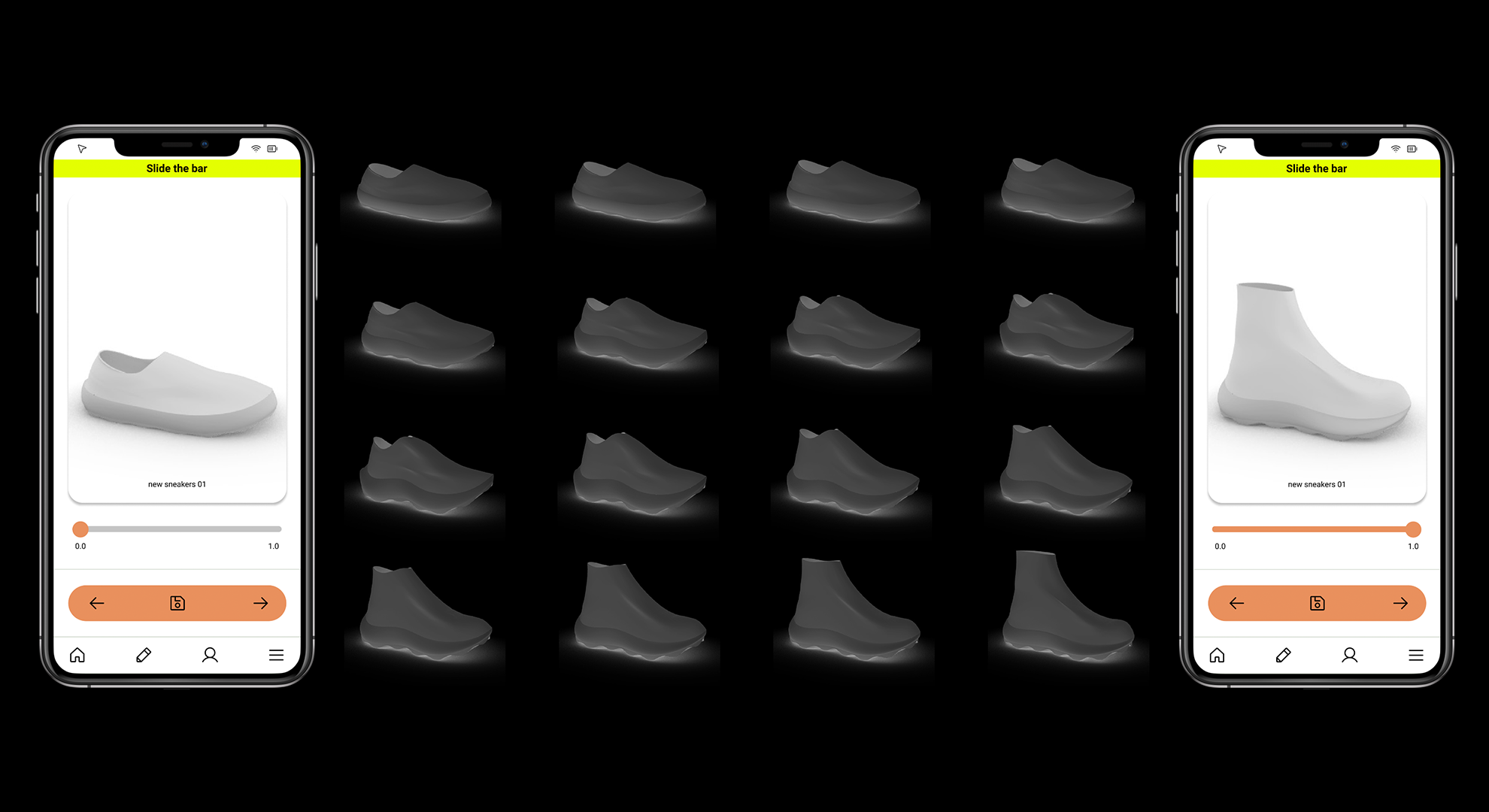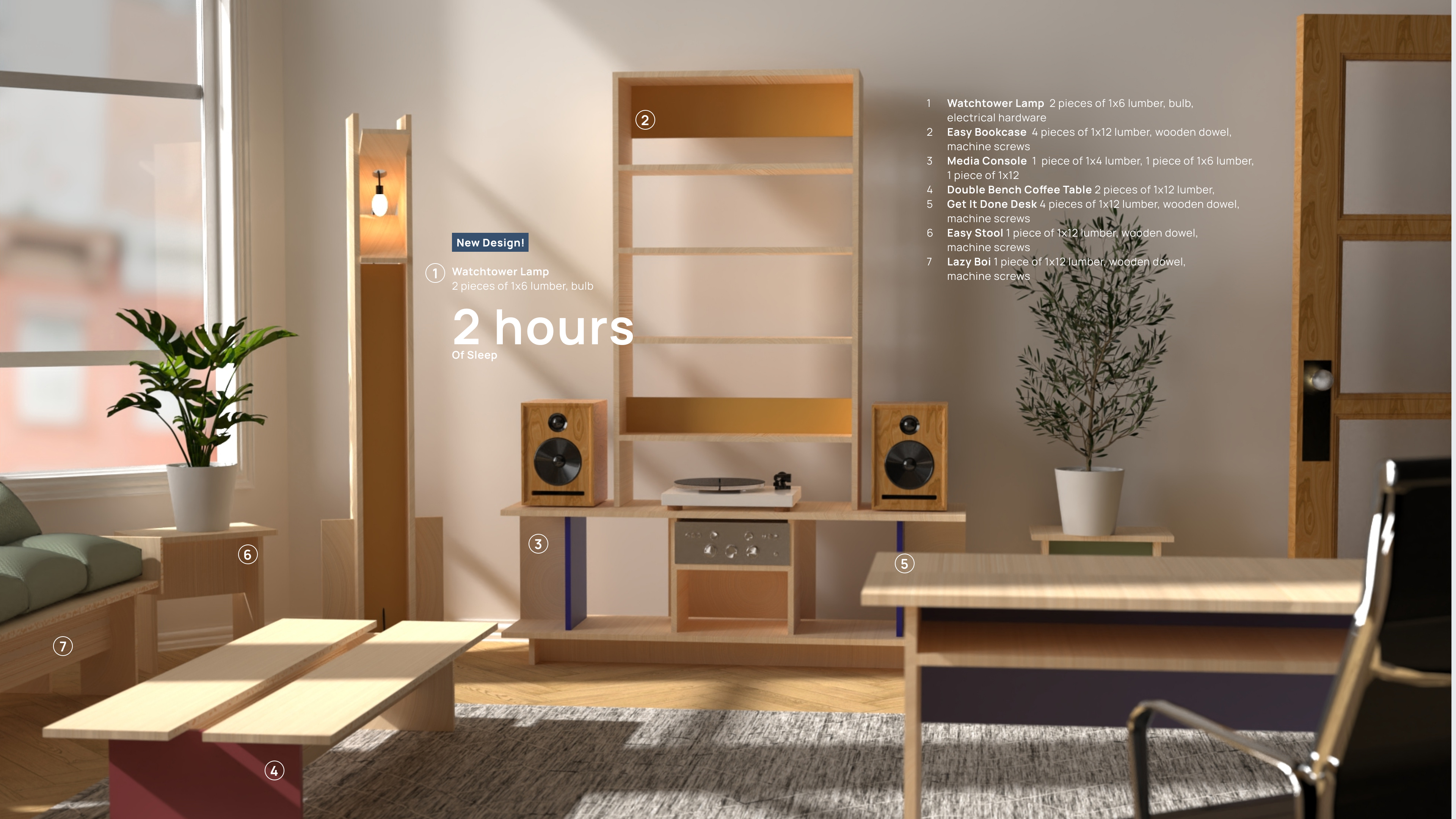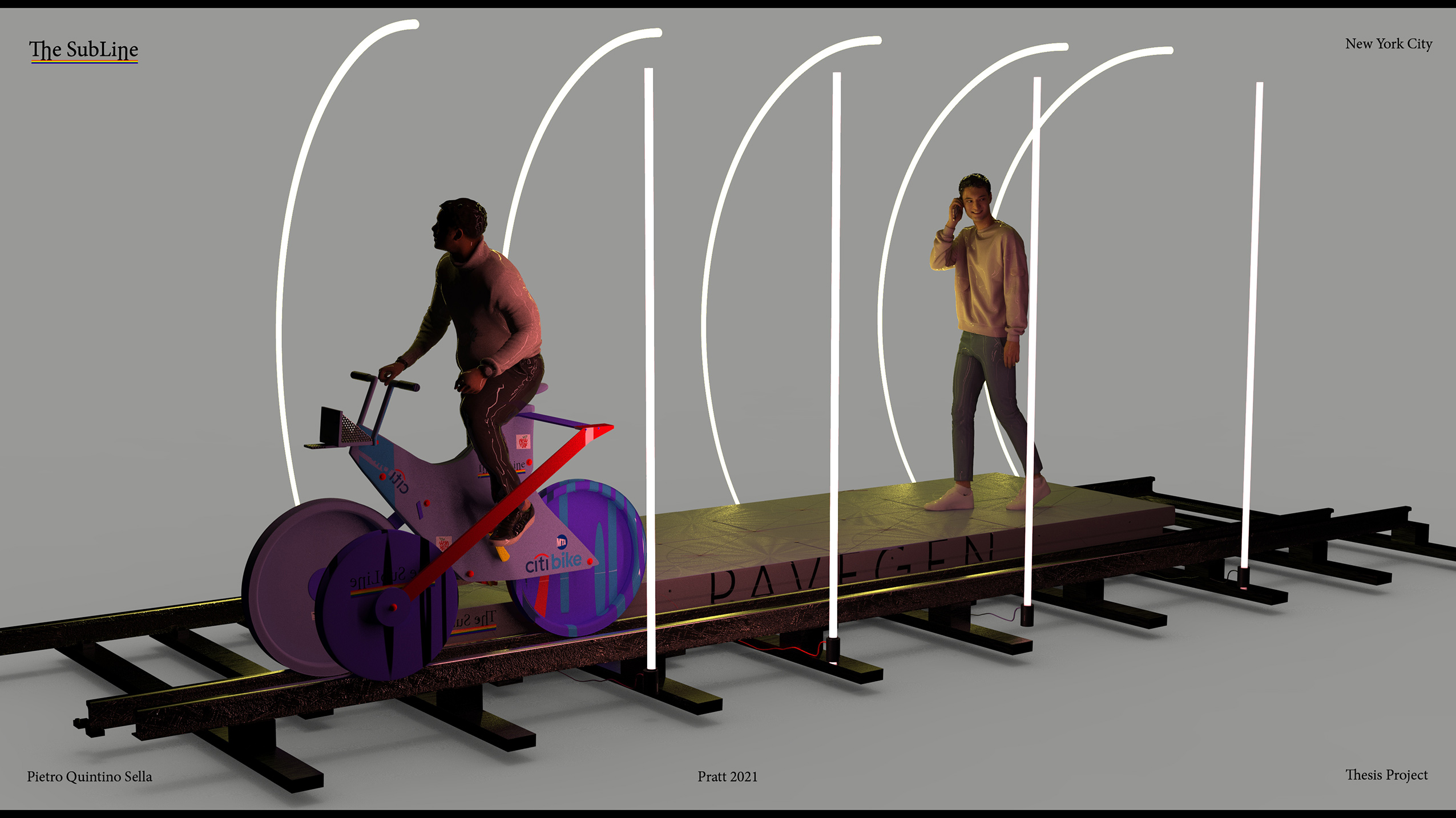Designed by
Chia-Yuan (Caleb) Ko
Kicks Morphogen
This study examines customizing footwear within an algorithm-driven framework that provides physical products and derivative pieces of digital art in virtual space. In examination of shoe customization available today, one controversial issue has been the narrow changeable options with a low degree of control. On the one hand, multiple sport brands argue for performance-driven outputs tailored for professional athletes. On the other hand, independent footwear companies contend repurposed materials or noticeable color themes in a two-dimensional range as primary features. Little information is known about how customers will interact with 3D form-finding steps, data inputs and personal aesthetic choice in virtual space and the meaning behind each selection. The research findings show what type of customization processes should be prioritized, meanwhile demonstrate the preferred resources that customers are willing to incorporate and how the decision is made when reaching the final result. This study provides a list of recommendations on developing reformatted shoe-customization services and highlights the extensive business potential including but not limited to social media platforms or mobile applications.




Chia-Yuan (Caleb) Ko / 高嘉元, essentialist, industrial designer and sneaker geek. He explores the intersection encompassing 3D interactive fabrication, origami texture and procedural art visualization, bridging physical and digital experience.
His works are featured in international design communities such as Core77 Design Awards, IDA Design Awards, Global Footwear Award and Taiwan Design EXPO. He holds a BS in Industrial Design and currently a MID student at Pratt Institute.
Personal web: https://kochiayuan.com
Contact: chiayuanko@gmail.com
His works are featured in international design communities such as Core77 Design Awards, IDA Design Awards, Global Footwear Award and Taiwan Design EXPO. He holds a BS in Industrial Design and currently a MID student at Pratt Institute.
Personal web: https://kochiayuan.com
Contact: chiayuanko@gmail.com
︎︎

Designed by
Lihsing Wang
Digital Handmade
This research, “Digital Degradation,” critiques mass-produced products targeting cheaper, faster manufacturing. In contrast to mass-production, handcraft has always been an attractive way of manufacturing products. The uniqueness of flaws inherent in handmade works is perceived to add rather than diminish the value. Attempts at digitizing or mass creating this same sort of mark have often been critiqued as a pastiche reference to handmade products, building in the same flaw into every product. I am proposing to find the flaws in the “Digital Hand’s Works.” This research uses the three-dimensional scanner to scan the original, printed out that scan, and going through serial generations to build this kind of difference visible within a set of domestic objects. The process explores a way of creating specificity to products that make equivalence value as handmade products.






Based in both the US and Taiwan, Lihsing Wang treats himself as a critical thinker and a cross-discipline designer. His works take place on the boundary between product design and artistic creation and are driven by technology, exploring new possibilities in current manufacturing methods and design processes by implementing emerging tools such as 3D scanning, printing, and algorithmic generative frameworks. Lihsing is currently in his last years of pursuing a master of Industrial Design degree at Pratt Institute; his work has been honored with the Red Dot award, IF design award, IT'S design award, A’s design award, and also has been shown at the NYCxDesign Exhibition during 2019 NYC Design Week.
Personal web: https://leowang.org/
Contact: lwang42@pratt.edu
Personal web: https://leowang.org/
Contact: lwang42@pratt.edu
︎︎︎
Designed by
Sean Kim
YourFurniture
3D printing has promised to change the way we approach making things; potentially allowing people to create their own objects without access to mass-manufacture. However, this promise has not been fully met; the types of objects that are freely available are not particularly useful: mostly novelties and toys. YourFurniture aims to get closer to that promise by allowing anyone to make their own furniture from off the shelf hardware and material with the aid of 3d printed tools and hardware. YourFurniture provides plans, step by step instruction, printed hardware and tools — all for free under a creative commons license — that allow anyone to make furniture inexpensively and easily. In doing so, I hope to encourage people to take advantage of widely available and inexpensively priced consumer 3d printers, allowing them to participate in the creation of their physical surroundings.




Sean is the founder and principal of Wooj, a product company focused on 3D printing and other technologies that enable domestic production of expertly designed products.
Sean has a background in psychology, software engineering, and product design. Having worked in the relentless and fast-paced startup world as both a designer and engineer, he brings a unique perspective to product design, combining his abilities as a psychologist, programmer, and designer to create products that are simultaneously complex, yet approachable.
Instagram/ Facebook/ LinkedIn accounts name: @seanwooj / @wooj.design
Website address: http://wooj.design
Email address: sean@wooj.design
Sean has a background in psychology, software engineering, and product design. Having worked in the relentless and fast-paced startup world as both a designer and engineer, he brings a unique perspective to product design, combining his abilities as a psychologist, programmer, and designer to create products that are simultaneously complex, yet approachable.
Instagram/ Facebook/ LinkedIn accounts name: @seanwooj / @wooj.design
Website address: http://wooj.design
Email address: sean@wooj.design
︎︎︎︎︎

Designed by
Chun-Shou Chi (Jim)
Repair builds value
My research builds upon the experiences Goldmark recounts by speculating that beyond price, other factors also contribute to the furniture's value, such as memories it triggers or sentimental values. Further investigation is needed on whether furniture repair services should focus on the standard of the original state or whether they should be more flexible to provide more opportunities for reusing furniture. According to research conducted by the Environmental Protection Agency (EPA), only 0.327% of the furniture could be recycled and composted, suggesting that the remaining 99.7% of furniture goes into landfills. My thesis explores the possibility of engaging these and other factors that add value to furniture, by building a new industrial design practice that focuses on repairing furniture through its owners' personal narratives. In this way, the repair is conceptualized as design in ways that offer more possibilities to keep or add value to the furniture, so that users have more flexibility in retaining their broken furniture.
After the industrial revolution, furniture making became more automated and has therefore reduced demand for labor-intensive repair services. Gradually since then, repair service providers turned to antiques and high-quality furniture. As the latest report from IBISWorld indicates that consumers were intending to purchase new furniture rather than hire furniture repair technicians between 2016 and 2019. This suggests that the financial value a piece of furniture has in the market becomes the primary factor determining whether it deserves repairing. However, according to the TED talk of Sandra Goldmark, the founder of Fixup, unlike the common practice of using and discarding furniture as single-life disposables, people contacted her for repairing their pieces, even though buying new ones might be cheaper. It indicates that financial value in the market that a piece of furniture has is not the one factor that matters, and we could investigate more values of vital importance to the owner.
After the industrial revolution, furniture making became more automated and has therefore reduced demand for labor-intensive repair services. Gradually since then, repair service providers turned to antiques and high-quality furniture. As the latest report from IBISWorld indicates that consumers were intending to purchase new furniture rather than hire furniture repair technicians between 2016 and 2019. This suggests that the financial value a piece of furniture has in the market becomes the primary factor determining whether it deserves repairing. However, according to the TED talk of Sandra Goldmark, the founder of Fixup, unlike the common practice of using and discarding furniture as single-life disposables, people contacted her for repairing their pieces, even though buying new ones might be cheaper. It indicates that financial value in the market that a piece of furniture has is not the one factor that matters, and we could investigate more values of vital importance to the owner.



Chun-Shou Chi (Jim) is an industrial designer who is passionate about creating innovative experiences through experiments from different perspectives, and translations from abstract concepts to concrete objects. He is interested in exploring the relationships between objects and humans.
Personal Instagram: @soa327
Thesis Instagram: @7objects_nyc
Facebook: Jim Chi(紀俊守)
LinkedIn accounts name: Chun-Shou (Jim) Chi
Website address: https://www.jimchidesign.com/
Email address: soa327@gmail.com
Personal Instagram: @soa327
Thesis Instagram: @7objects_nyc
Facebook: Jim Chi(紀俊守)
LinkedIn accounts name: Chun-Shou (Jim) Chi
Website address: https://www.jimchidesign.com/
Email address: soa327@gmail.com
︎︎︎︎︎

Designed by
Pietro Quintino Sella
New York City has an incredible real-estate infrastructure completely left to degradation with great potentialities. Investors, engineers, and designers are already exploiting these spaces and similar ones with beautiful creations, some of these have the potential to change the future of metropolis forever. The idea of bringing a bicycle underground in New York City makes total sense to me. An adaptable bike pavement or an underground bike that would slide through the rails of Manhattan could indeed become a reality in to- day’s New York City. Seeing examples of retrofitting space mentioned previously such as the prominent Highline and the upcoming Lowline are strong realities. Indeed, New York City, being one of the world capi- tals of ideas, creativity and forward-thinking, I strongly believe my design proposal would be just fit for NYC.




Pietro Quintino SellaPratt Institute MID 2021
